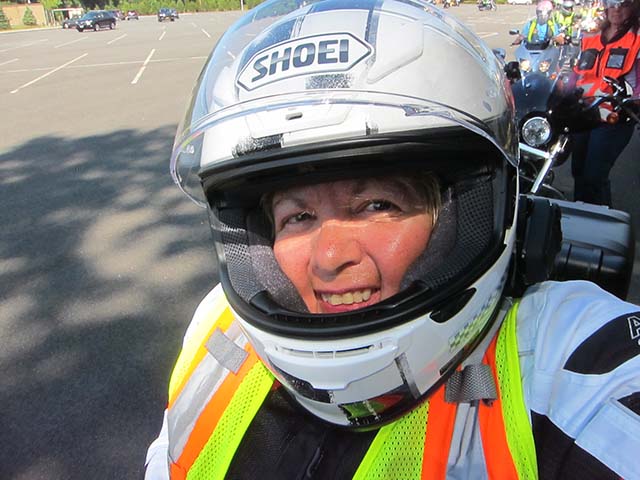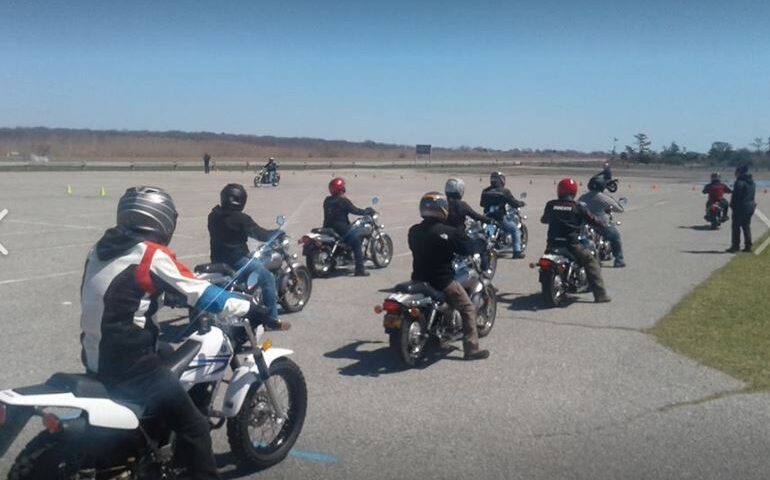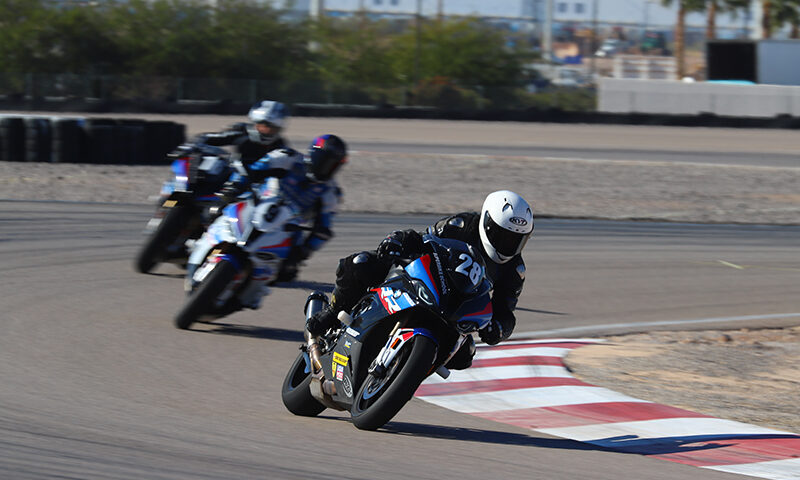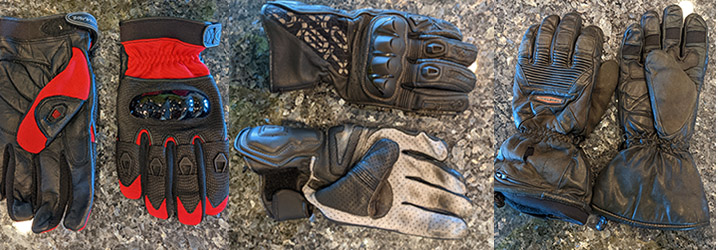How to choose a motorcycle helmet
By George Tranos
Choosing a motorcycle helmet can be a daunting task for the new rider. There is a huge selection of helmets available and they come in many types, shapes and sizes. We get questions all the time from our students asking for their assistance in selecting the right gear for their course and for riding on the street afterwards. We’ll try to answer the most frequently asked questions right now.
First, what type of helmet works best? The answer is that it depends. How will you be using the helmet? How much protection do you want? What style do you want? Here is some information to help answer those questions.
A full face helmet offers the most protection. It covers the head and the face and has a face shield to see through. The shield provides eye protection and can keep air, dirt and the proverbial bugs out of your teeth and off your face! Most importantly, the full face helmet will provide face and chin protection if you fall and your helmet contacts the ground or another object. It is also the quietest type of helmet and will better protect your hearing from wind noise and other sound. The full face helmet may be hot if it is not properly ventilated.
A three-quarter helmet has similar head protection but does not have the chinbar to protect your face. It may or may not have a face shield. A half-helmet has even less protection and normally your ears and lower part of your head are not covered. It may or may not have a face shield. Normally, motorcycle goggles or shatter resistant eye wear is used with the half-helmet.
A modular helmet is similar to a full face helmet when closed but may be lifted up to expose the face. This type of helmet has become more popular as it is a compromise between protection and convenience.
An off-road helmet normally is a full face helmet without a face shield but with a sun visor / wind and dirt deflector in the front. Motorcycle goggles are normally used in combination with this helmet.
Shatter-resistant eye protection is required for riding motorcycles. Regular sunglasses are not adequate as proper eye protection! If using glasses, they must be shatter-proof and have foam backs to prevent air and dirt from entering the eyes. A helmet with a face shield is also considered proper eye protection.
Most helmets have a retention system that consists of a strap with D-rings on the end. The helmet is secured when the strap is inserted through the two D-rings and then pulled back and secured by the inner D-ring (similar to strapping a belt). There is sometimes a snap on the end of the strap. This gets secured to a button on the helmet to keep the strap from whipping around in the wind. The snap and button do not secure the helmet – it is the D-rings that do this! Don’t make a mistake and use only the button and snap! The only negative to D-rings is that you can’t easily secure them if you are wearing gloves.
Other retention systems exist that allow a quick release of the strap to put on and take off the helmet more easily with gloves on. These systems are convenient but don’t offer the security and simplicity of the D-ring system. They may come detached when riding allowing the helmet to come off your head when you need it most!
Any helmet sold in the United States for motorcycle use must be approved by the Department of Transportation (DOT). A DOT sticker must be present and is normally shown on the back of the helmet. This DOT approval means the helmet design has been tested and approved for motorcycle use. Other helmet standards include Snell and ECE (European). Both of these additional standards means the helmet has passed other tests to obtain certification.
What distinguishes a $100 helmet from a $1000 helmet? Both helmets must meet DOT standards to be approved for use. The price difference normally is because of a number of factors. The materials used to manufactured the helmet can vary greatly. Some exotic, strong and light weight materials such as carbon fiber or Kevlar cost a great deal more than fiberglass or polycarbonate plastic. The comfort liner of the helmet may be removable making it more easily washable and replaceable. The helmet may also offer movable vents that can be opened and closed to provide airflow. This can keep a helmet more comfortable in hot or cold weather. The helmet might also have a face shield that is fog resistant or can change gradient in sunlight making it appear darker or lighter. It might also have a shield retention and replacement system that allows the ability to quickly swap face shields without tools. All of these features cost money. The protection may be the same between the cheaper and more expensive helmet but the comfort, convenience, design and ventilation may be different.
Helmet fit is also an important consideration. Helmets come in different shapes and sizes. Generally, there are three helmet shapes – round, oval and intermediate oval. Someone with a round head will not fit well into an oval helmet and visa-versa. If your head is more round, look for helmets with a similar shape. There are websites that will helmet you determine which brand and model of helmet will fit the different head shapes. They will also help you measure your head to choose the proper size helmet. Note that different manufacturers use different sizing so a size large in one brand may not be a large in another. Please see: lidpicker.com for help in choosing the proper shape and size. When all else fails, try on as many helmets as possible to see what fits best. Note that helmets should fit snugly without hurting. If it hurts when you put it on, either it is not the right size or shape! The helmet will “break in” a little bit so if it’s a little snug when new, that’s okay as it will be looser after it’s worn a bit.
Another important consideration is that a white or high-visibility (Hi-Viz) color is more readily seen by other motorists. Helmets with these colors were noticeably under-represented in motorcycle crash studies indicating that drivers can see these riders more easily.
In the end, a helmet is like a motorcycle – everyone likes something different – taste and style are a subjective thing. We know you want to look good in your helmet but it should provide protection and comfort first!





